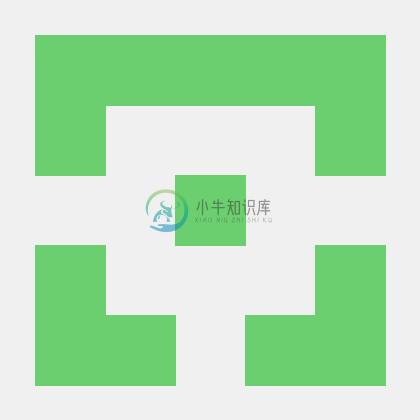Knowledge Extraction Recipes - Forms
Retrieving information from documents and forms has long been a challenge, and even now at the time of writing,organisations are still handling significant amounts of paper forms that need to be scanned, classified and minedfor specific information to enable downstream automation and efficiencies. Automating this extraction and applyingintelligence is in fact a fundamental step toward digital transformation that organisations are still strugglingto solve in an efficient and scalable manner.
An example could be a bank that receives hundreds of kilograms of very diverse remittance forms a day that need to beprocessed manually by people in order to extract a few key fields. Or medicinal prescriptions need to be automated to extract theprescribed medication and quantity.
Typically organisations will have built text mining and search solutions which are often tailored for a scenario,with baked in application logic, resulting in an often brittle solution that is difficult and expensive to maintain.
Thanks to the breakthroughs and rapid innovation in the machine learning fields of Computer Vision and NaturalLanguage Processing (NLP), reliable options are now available to provide data driven solutions that generaliseand provide high degrees of accuracy in extracting information from structured forms.
Coupled with Azure services this provides rapidly deployable, cost efficient andscalable solutions ready for production workloads.
Overview
The goal of this Playbook is to build a set of guidance, tools, examples and documentation that illustrate someknown techniques for information extraction, all of which have been applied in real customer solutions.
We hope that the Playbook can significantly reduce the overall development time by simplifying the decision makingprocess from defining the business problem to analysis and development.
The first focus of the Playbook is extraction of information from Forms.
Intended audience
The intended audience of this Playbook include:
- Engineering/project leads
- Data scientists/data engineers
- Machine learning engineers
- Software engineers
How this Playbook is structured
This Playbook aims to provide step-by-step guidance for each phase of a typical Forms Extraction project alongside typical considerations, key outcomes and code accelerators per phase. To follow the guidance process see the Walkthrough or dip into the individual code accelerators
Getting Started
The best place to start if this is your first foray into this Playbook is with the Checklist, and then the Walkthrough to ensure that the most importantpoints are addressed in order to build a successful solution in this space.
Terminology used in this Playbook
We refer to the Supervised version of the Form Recognizer service when the argument Use Labels set to True when training, and the Unsupervised version of Form Recognizer as when the argument Use Labels is set to False.
We refer to a form issuer as being the unique source of a form, for example, the vendor of an invoice, or the bank of origin of an application form.
End to end demos
✨
| Stage | Scenario | Description |
|---|---|---|
| AutoLabelling and Prediction | AutoLabelling | Chains AutoLabelling, Training and Prediction on sample invoices |
| Pre-Processing Remove Boxes | RemoveBoxes | Shows how to remove boxes that cause OCR errors and find the best image transformation |
| Get Values in CheckBoxes | Detect and get CheckBox value | Detects and gets the value from CheckBoxes |
Code accelerators
The following code accelerators serve as starting points to try approaches that are known to work for KnowledgeExtraction.Note - these accelerators need to be adapted to your data and tested and profiled, they are not production readyand need to be incorporated into your pipeline and profiled
The code accelerators included are available in Jupyter notebooks, APIs and python scripts that showcase some of the scenariosin this repository using diverse approaches.
| Stage | Scenario | Description |
|---|---|---|
| Project preparation | Checklist | Steps to ensure success |
| Project preparation | Decision Guidance | Core decision points |
| Project preparation | Data Structure | Recommended training data structure |
| Analysis | Understanding the data distribution | Illustrates a simple way to understand the distribution of vendor to invoice frequency |
| Analysis | Understanding form variation | Illustrates how to analyse whether variation in a single form type exists |
| Analysis | Form layout type labelling using clustering based on text features | Shows an approach which can be used to discover/label different layout types within a big dataset of forms images |
| Analysis | Form layout clustering based on text and text layout features | Shows another approach which can be used to discover different layouts within a big dataset of images, taking words and positions of words on a page into account |
| Analysis | Classifying forms | Illustrates how to use an attribute based search approach to classify forms for Form Recognizer model correlation |
| Analysis | Routing forms | Demonstrates how to use OCR results to find which Form Recognizer model to send an unknown form to |
| Pre-Processing | Image Channel Normalisation | Illustrates interactive normalisation, binarization and greyscale conversion |
| Pre-Processing Remove Boxes | RemoveBoxes | Illustrates interactively how to remove boxes that cause OCR errors and find the best image transformation |
| Pre-Processing | Conversion | Converting documents between various formats such as TIF to PDF, JPG to PDF etc |
| Pre-Processing | Scan skewness | Illustrates testing and correcting skewness |
| Pre-Processing | Projection | Illustrates how to identify document skew and location of text lines |
| Pre-Processing | Detect and get CheckBox value | Illustrates how to detect and get a CheckBox value |
| Pre-Processing | Optical Mark Recognition | Illustrates some techniques to determine if a checkbox exists and how to extract it |
| Training | Dataset representativeness | Illustrates how test how to test the train and test datasets for representativeness |
| Training | Named Entity Recognition | Illustrates how NER can be trained used to identify and extract entities on a form |
| Training | Auto-labelling and training set optimisation | Illustrates how forms can be automatically labelled for the supervised version of Form Recognizer |
| Training | Generating a taxonomy | Illustrates a simple approach to generating a taxonomy of known terms from the forms |
| Extraction | Custom Corpus | Describes an approach to handling a custom corpus |
| Extraction | Handwriting and common OCR Errors | Describes an approach how to deal with common errors |
| Extraction | Predicting forms with Form Recognizer Supervised | Predicting forms with Forms Recognizer Supervised |
| Extraction | Predicting forms with Form Recognizer Unsupervised | Predicting forms with Forms Recognizer Unsupervised |
| Extraction | Using filter keys from a taxonomy | Illustrates how to filter the keys extracted from the unsupervised version of Form Recognizer using a taxonomy of known terms |
| Extraction | Table Extraction | Illustrates extracting tables with Form Recognizer |
| Evaluation | Scoring | Illustrates how to evaluate and score with Form Recognizer |
PowerApps
✨
NEW (▀̿Ĺ̯▀̿ ̿)
| Stage | Scenario | Description |
|---|---|---|
| Invoice Automation | PowerApps | Invoice Automation using the Power Platform |
Example Pipelines
The Pipelines section contains some example patterns and pipelines for Knowledge Extraction using Azure Services.
| Scenario | Description |
|---|---|
| Azure Cognitive Search | Sample pipeline using Azure Cognitive Search |
| Azure Kubernetes Service | Sample pipeline using Azure Kubernetes Service |
| Azure Machine Learning | Sample pipeline using Azure Machine Learning |
| Azure Logic Apps | Sample pipeline using Azure Logic Apps |
| Azure (Durable) Functions | Sample pipeline using Azure (Durable) Functions |
Tips and Best Practices for Form Recognizer
For tips and best practices for managing Form Recognizer models via MLOps and deployment pipelines, view MLOps Tips and Tricks for Form Recognizer.
Example Scenarios
This section contains some documented common scenarios
| Scenario | Description |
|---|---|
| CV or Resume Extraction | Sample extraction flow for a CV/Resume |
| Email Extraction | Sample extraction from emails |
| Geolocation Extraction | Sample extraction for Geolocation |
| Prebuilt Receipt Model | Sample extraction for the prebuilt Receipt model |
| Table extraction with Forms Recognizer | Sample extraction for Tables using Forms Recognizer |
| Document Extraction detailed example using JFK Files | Sample extraction for Tables using Form Recognizer |
| Dealing with multiple languages | Illustrates a few approaches with dealing with multiple languages |
| Custom extraction from Japanese forms | Illustrates a an approach to custom extraction from Japanese forms |
| Informative Image Selection using OCR with Form Recognizer Extraction | Illustrates an approach to selecting the most "informative" image from a group of similar images before extracting data with the Form Recognizer |
Azure Services used in this repository
Azure Computer Vision OCR
Read APIdetects text content in an image using our latest recognition models and converts the identified text into amachine-readable character stream. It's optimized for text-heavy images (such as documents that have been digitallyscanned) and for images with a lot of visual noise. It will determine which recognition model to use for each lineof text, supporting images with both printed and handwritten text. The Read API executes asynchronously becauselarger documents can take several minutes to return a result.
OCR API Computer Vision's optical character recognition (OCR)API is similar to the Read API, but it executes synchronously and is not optimized for large documents. It uses anearlier recognition model but works with more languages
Azure Cognitive Search
Azure Cognitive Search is a fully managed search as a service to reducecomplexity and scale easily including:
- Auto-complete, geospatial search, filtering, and faceting capabilities for a rich user experience
- Built-in AI capabilities including OCR, key phrase extraction, and named entity recognition to unlock insights
- Flexible integration of custom models, classifiers, and rankers to fit your domain-specific needs
Form Recognizer Service
Form Recognizer applies advancedmachine learning to accurately extract text, key/value pairs and tables from documents.
The Form Recognizer has two modesof operation:
- Custom Model:This mode can be trained to recognise specific form types based on your own example data set
- Prebuilt Receipt Model: This model is pre-trained (requires no training from you) to reocgnise and extract key data points from receipts(i.e. till receipts, resturant bills, general retail receipts etc)
The Custom Model requires the following for training:
- Format must be JPG, PNG, or PDF (text or scanned). Text-embedded PDFs are best because there's no possibility of error in character extraction and location.
- If your PDFs are password-locked, you must remove the lock before submitting them.
- File size must be less than 4 MB.
- For images, dimensions must be between 600 x 100 pixels and 4200 x 4200 pixels.
- If scanned from paper documents, forms should be high-quality scans.
- Text must use the Latin alphabet (English characters).
- Data must contain keys and values.
- Keys can appear above or to the left of the values, but not below or to the right.
Form Recognizer doesn't currently support these types of input data:
- Complex tables (nested tables, merged headers or cells, and so on).
- Checkboxes or radio buttons.
- PDF documents longer than 50 pages.
See more on training Form Recognizer here
The requirements for the prebuilt receipt model are slightly different.
- Format must be JPEG, PNG, BMP, PDF (text or scanned) or TIFF.
- File size must be less than 20 MB.
- Image dimensions must be between 50 x 50 pixels and 10000 x 10000 pixels.
- PDF dimensions must be at most 17 x 17 inches, corresponding to Legal or A3 paper sizes and smaller.
- For PDF and TIFF, only the first 200 pages are processed (with a free tier subscription, only the first two pagesare processed).
Azure Machine Learning service
Azure Machine Learning service is a cloudservice used to train, deploy, automate, and manage machine learning models, all at the broad scale that the cloudprovides. AzureML is presented in notebooks across different scenarios to enhance the efficiency of developing NaturalLanguage systems at scale and for various AI model development related tasks like:
- Accessing Datastoresto easily read and write your data in Azure storage services such as blob storage or file share.
- Scaling up and out on Azure Machine Learning Compute.
- Automated Machine Learning which builds high quality machine learning models by automating model and hyperparameter selection.
- Tracking experiments and monitoring metrics to enhance the model creation process.
- Distributed Training
- Hyperparameter tuning
- Deploying the trained machine learning model as a web service to Azure Container Instance for deveopment and test, or for low scale, CPU-based workloads.
- Deploying the trained machine learning model as a web service to Azure Kubernetes Service for high-scale production deployments and provides autoscaling, and fast response times.
To successfully run these code accelerators, you will need an Azure subscriptionor can try Azure for free. There may be other Azure services or productsused in the code. Introduction and/or reference of those will be provided in the code themselves.
Contributors
✨
Contributing
See CONTRIBUTING.md for contribution guidelines.
Additional References
Please refer to the following fantastic references for additional material relevant to knowledge extraction:
Azure Cognitive Search additional links
General and custom information extraction
- Custom NLP models - Microsoft NLP Recipes
- Spacy Phrasematcher
- RegEx debugger and code snippets
- Recognizers-Text (entity recognition for numbers, units, and date/time; in multiple languages)
Addresses
Image pre-processing
PDF conversion
OCR
MLOps
Intelligent Kiosk Demo
-
F2E-Awesome 更新时间:2021-02-18 难度等级:☆ 为初级,☆☆ 为中级,☆☆☆ 为高级。 标签体系:开发工具、HMTL5、CSS、JS、主流框架、优化、Web服务器端、Serverless、源码学习、必学原理、前端类库、移动端、PWA、WebAssembly、小程序、Canvas、WebGL、SVG、Graphql、模块化编程、算法、排序、加密、数据结构、数据库、包管理、Pyt
-
Tandoor Recipes The recipe manager that allows you to manage your ever growing collection of digital recipes. Installation •Documentation •Demo •Discord server Your Feedback Share some information on
-
健康知识是基于医药吧网开放 API 的健康知识手机平台,该软件完全基于 Sencha Touch 开发。 运行效果: 类似软件 健康资讯:http://www.oschina.net/p/health-news 健康知识:http://www.oschina.net/p/health-knowledge 健康一问:http://www.oschina.net/p/health-ask-app
-
Response Extraction Rules Response extraction rules are used in various locations within Burp, to define the location within a response of a varying item that needs to be extracted. They are used to i
-
Sass Recipes parcel (recommended) gulp-sass: watch, compile, autoprefixer, sourcemaps node-sass TODO webpack css modules (with scss) styled-components prettier, lint-staged, husky
-
Computer Vision In recent years, we've see an extra-ordinary growth in Computer Vision, with applications in face recognition, image understanding, search, drones, mapping, semi-autonomous and autonom



























